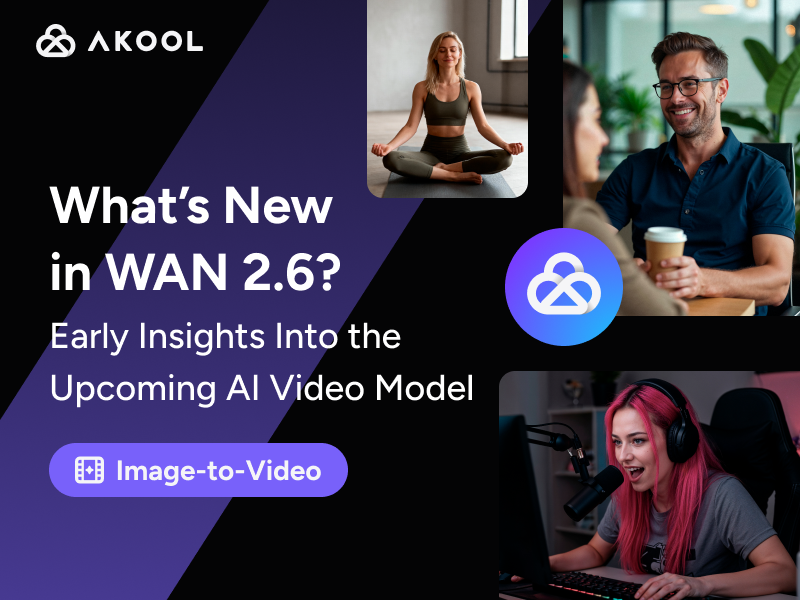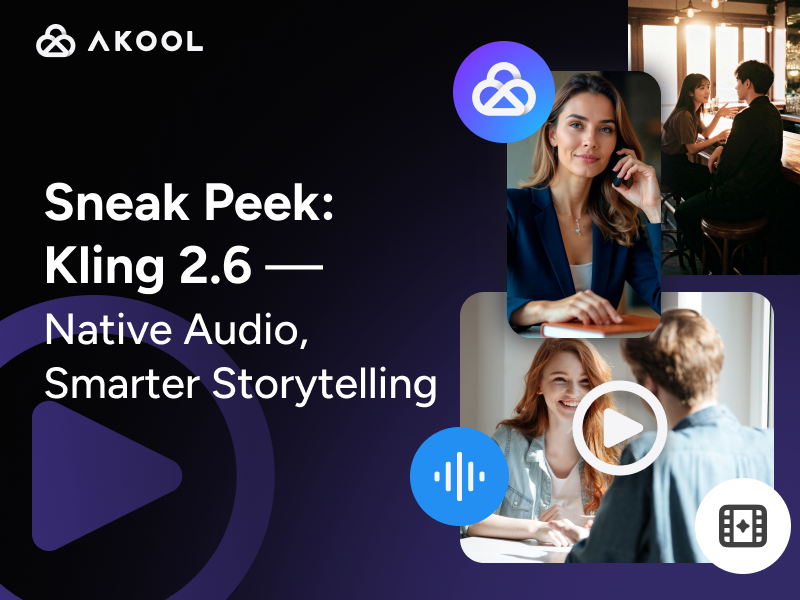Introduction to Language AI
Language AI refers to artificial intelligence technologies designed to understand, generate, and interact using human language. This encompasses natural language processing (NLP) and natural language generation (NLG). Capable of tasks like sentiment analysis, translation, and content creation, Language AI empowers creators and agencies by automating text-based processes, enhancing creativity, and improving communication efficiency. Its capabilities are continually evolving, driven by advancements in machine learning and computational linguistics.
How to Use Language AI
Language AI offers a wide array of tools and functionalities that creators and agencies can leverage to enhance their workflow. Here's how you can effectively use Language AI:
Definitions
- Language AI: Technologies that process, generate, and understand human language through machine learning models.
- Natural Language Processing (NLP): Understanding and interpreting human language.
- Natural Language Generation (NLG): Creating human-like text based on data inputs.
Capabilities
- Content Generation: Automate writing tasks, such as drafting blog posts or creating social media content.
- Translation: Break language barriers with real-time text translations. For effective AI-driven translation solutions, explore AI Video Translator and AI Spanish to English Translation.
- Customer Interaction: Use AI-driven chatbots for 24/7 customer service.
- Data Analysis: Conduct sentiment analysis on social media to gauge public opinion.
Useful Formulas
- Text Generation: Use models like GPT (Generative Pre-trained Transformer) to create coherent and contextually relevant text.
- Sentiment Analysis: Implement algorithms that score text to determine positive, negative, or neutral sentiment.
Steps for Implementation
Identify Needs: Determine which tasks or processes can benefit from automation or enhancement via Language AI (e.g., content creation, translation).
Choose the Right Tool: Research and select a Language AI tool that meets your specific needs. Options include OpenAI's GPT models or exploring AI Text-to-Speech Avatars for dynamic content creation.
Integrate with Existing Systems: Ensure the AI tool can seamlessly integrate with your current workflow or digital platforms.
Train and Customize: Customize the AI to fit your brand's voice or specific requirements. This may involve training models with your own data.
Monitor and Optimize: Continuously monitor AI output for quality and relevance, making adjustments as needed to improve performance.
Using Language AI effectively requires understanding its capabilities and aligning them with your creative goals. With the right approach, Language AI can significantly enhance productivity and creativity in your projects.
Applications of Language AI
Language AI is transforming how creative industries operate. Here are some key applications:
- Content Creation: Leverage tools to generate blog posts, scripts, and marketing copy, streamlining content production.
- Translation Services: AI models, such as those available through AI French to English Translation, offer real-time language translation, breaking down communication barriers.
- Sentiment Analysis: Used in social media monitoring, AI analyzes customer sentiment to inform marketing strategies.
- Chatbots and Virtual Assistants: Platforms automate customer service, providing instant responses and improving user experience.
- Text Summarization: AI condenses lengthy documents into concise summaries, aiding in quicker decision-making.
These applications enhance efficiency, creativity, and communication, making Language AI a valuable asset in the creative sector.
Technical Insight into Language AI
Language AI is deeply rooted in two core areas: Natural Language Processing (NLP) and Natural Language Generation (NLG).
Natural Language Processing (NLP)
| Component | Description |
|---|---|
| Tokenization | Breaking text into words or sentences. |
| Parsing | Analyzing syntax to understand grammatical structure. |
| Named Entity Recognition | Identifying entities like names, dates, and organizations. |
- Techniques: Utilizes machine learning models such as transformers and neural networks to improve accuracy and efficiency.
Natural Language Generation (NLG)
| Process | Description |
|---|---|
| Content Determination | Deciding what information to include. |
| Sentence Aggregation | Combining information into coherent sentences. |
| Surface Realization | Structuring sentences grammatically. |
Language AI leverages advancements in computational linguistics and machine learning, continually refining its ability to understand and generate human language.
Useful Statistics on Language AI
Understanding the current landscape of Language AI can provide valuable insights for creators, developers, and creative agencies. Here are some recent statistics that highlight the growing importance and capabilities of Language AI:
- Market Growth:
- As of 2023, the global Language AI market is projected to reach approximately $12 billion by 2025, growing at a compound annual growth rate (CAGR) of 20.3% from 2020 to 2025.
Why it's useful: This rapid growth indicates a significant expansion in the adoption of Language AI technologies across various industries, suggesting increased opportunities for innovation and the development of new applications.
Accuracy Improvement:
- Recent advancements have pushed language model accuracy to over 90% in tasks such as sentiment analysis and language translation.
Why it's useful: Improved accuracy enhances the reliability and effectiveness of Language AI applications, making them more viable for critical business functions and more appealing to end users.
Natural Language Processing (NLP) Adoption:
- Approximately 70% of companies are expected to adopt at least one form of NLP technology by 2025.
Why it's useful: This statistic underscores the growing reliance on NLP for automating and improving processes like customer service, content creation, and data analysis, making it a key area for developers and agencies to focus their efforts.
AI Writing Tools Usage:
- Over 50% of digital marketers currently use AI-powered writing tools to generate content.
- Why it's useful: This high adoption rate reflects the efficiency and productivity gains that Language AI can provide, particularly in content-heavy fields where speed and consistency are critical.
These statistics illustrate the transformative potential of Language AI in various sectors, highlighting opportunities for innovation and the necessity for businesses to stay informed and adaptable in the evolving AI landscape.
Language AI FAQ
What is Language AI and how does it work?
Language AI is a cutting-edge artificial intelligence service designed to understand, interpret, and generate human language. It utilizes advanced algorithms and machine learning models to process natural language, enabling applications such as text analysis, translation, and conversational interfaces.
How can Language AI improve customer support services?
Language AI can enhance customer support by providing automated responses, analyzing customer inquiries for sentiment and intent, and offering real-time language translation. This leads to faster response times, improved customer satisfaction, and reduced operational costs.
Is Language AI capable of understanding multiple languages?
Yes, Language AI supports multilingual capabilities, allowing it to comprehend and process a wide range of languages. This feature is crucial for global businesses looking to engage with diverse audiences across different regions.
What industries can benefit from Language AI solutions?
Language AI can be utilized across various industries, including healthcare, finance, e-commerce, and education. It aids in tasks such as automating documentation, enhancing communication, improving data analysis, and personalizing user experiences.
How does Language AI handle data privacy and security?
Language AI is designed with robust security measures to protect user data. It complies with industry standards and regulations to ensure that all processed information is secure and private, providing businesses with peace of mind.
Can Language AI be integrated with existing software systems?
Yes, Language AI offers flexible integration options with various software systems and platforms. Its API and SDKs enable seamless integration, allowing businesses to enhance their current applications with advanced language processing features.
What are the benefits of using Language AI for content creation?
Language AI streamlines content creation by generating high-quality text, suggesting improvements, and ensuring grammatical accuracy. It helps content creators save time, maintain consistency, and produce engaging material tailored to their audience.
How does Language AI enhance natural language processing (NLP) applications?
Language AI improves NLP applications by providing more accurate language understanding, context recognition, and response generation. This results in more intuitive and human-like interactions in applications such as chatbots, virtual assistants, and automated transcription services.




